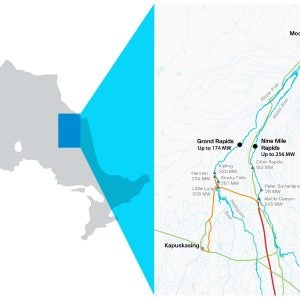The acquisition of the E.ON US assets will transform PPL into a more geographically diverse utility holding company with combined annual revenues of about $10B, serving nearly 5 million electricity customers in the US and the UK, and owning or controlling about 20,000MW of US electricity generating capacity.
James H. Miller, PPL’s chairman, president and chief executive officer, said PPL intends to operate the company as a wholly owned subsidiary of PPL Corporation, retaining the headquarters in Louisville, as has been the case with E.ON AG ownership. Customers will continue to be served by LG&E and KU, with operational headquarters in Louisville and Lexington, respectively.
PPL will pay for the transaction with $6.7B of cash and through the assumption of $925M of tax-exempt debt. PPL has committed bridge financing in place from Bank of America Merrill Lynch and Credit Suisse. Miller said the permanent financing plan will include a combination of common equity, first mortgage bonds, corporate debt, high-equity-content securities and cash on hand. Proceeds from the sale of PPL non-core assets may be explored as a potential to fund a portion of the transaction. PPL will receive tax benefits with a present value of about $450M as part of the transaction. Taking into account the tax benefits, the effective purchase price is $7.175B.
The transaction is expected to close by the end of this year. It requires approvals by state regulators in Kentucky, Virginia and Tennessee and by the Federal Energy Regulatory Commission as well as the expiration of the waiting period under the Hart-Scott-Rodino Antitrust Improvements Act. No shareowner approvals are necessary for the transaction. Credit Suisse and Bank of America Merrill Lynch served as PPL’s financial advisers. Simpson Thacher & Bartlett, LLP, served as legal adviser.
Louisville Gas & Electric Company currently operates the Ohio Falls hydroelectric station.
In other news, PPL Corp held the official groundbreaking ceremony at the Holtwood expansion project yesterday (3 May). President and CEO Miller officially kicked off the project, joined by Pennsylvania Gov. Edward G. Rendell; US Rep. Joseph R. Pitts; federal, state and local government officials; and representatives of major contractors working on the project.
PPL’s investment at Holtwood provides a significant economic stimulus for the region. The project will create 200 construction jobs over the next three years, plus additional jobs at the nearby Voith Hydro facility in York, which is manufacturing the turbine-generators for the new portion of the Holtwood plant.
PPL had withdrawn plans to increase generation at Holtwood in December 2008 in light of economic conditions, but revisited — and ultimately restarted — the project in 2009 because of investment tax credit provisions in the federal economic stimulus program and strong support from state government agencies.
The Federal Energy Regulatory Commission approved PPL’s request in November 2009 to add 125MW of generating capacity at the plant, and in addition, extended the operating license for the Holtwood hydroelectric plant by 16 years to August 2030.
Preliminary construction work began in January. A new hydroelectric powerhouse will be built on the site of a coal-fired power plant that was permanently shut down in 1999. The project is expected to be completed in the spring of 2013.
The existing hydroelectric plant, with a generating capacity of 108MW, will continue operations, as it has since going into service in October 1910.
The expansion project also includes improvements to fish passage at the Holtwood Dam, which will create environmental benefits by enabling more migratory fish to reach upstream spawning areas along the Susquehanna and its tributaries, and enhancements that will improve recreational opportunities for boaters upstream and downstream from the Holtwood Dam.
The Holtwood plant has been generating electricity since 1910, using water held back by a 55ft high dam across the Susquehanna River between Lancaster and York counties in south central Pennsylvania. The dam created Lake Aldred, an 8-mile reservoir that provides opportunities for boating, fishing and other public recreation.






